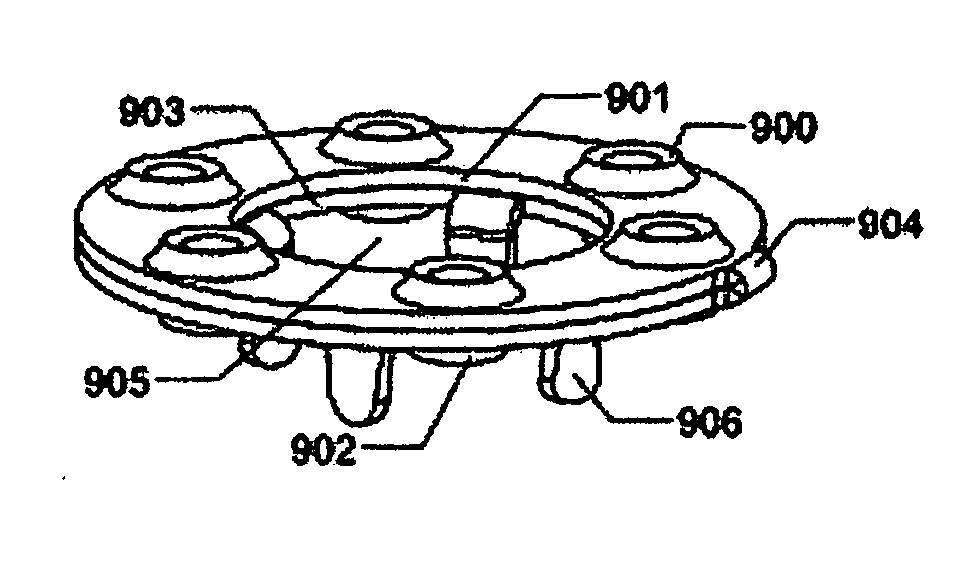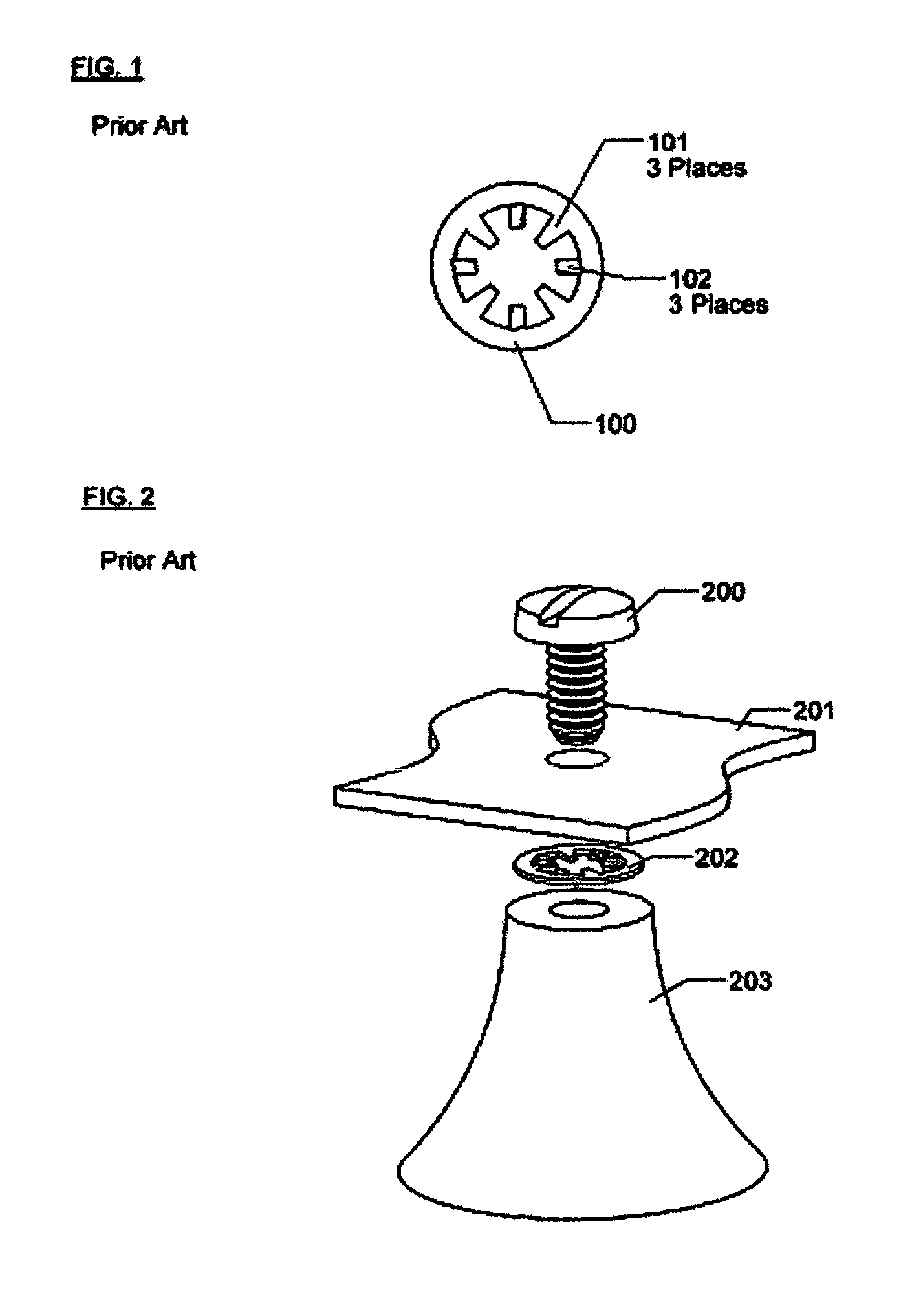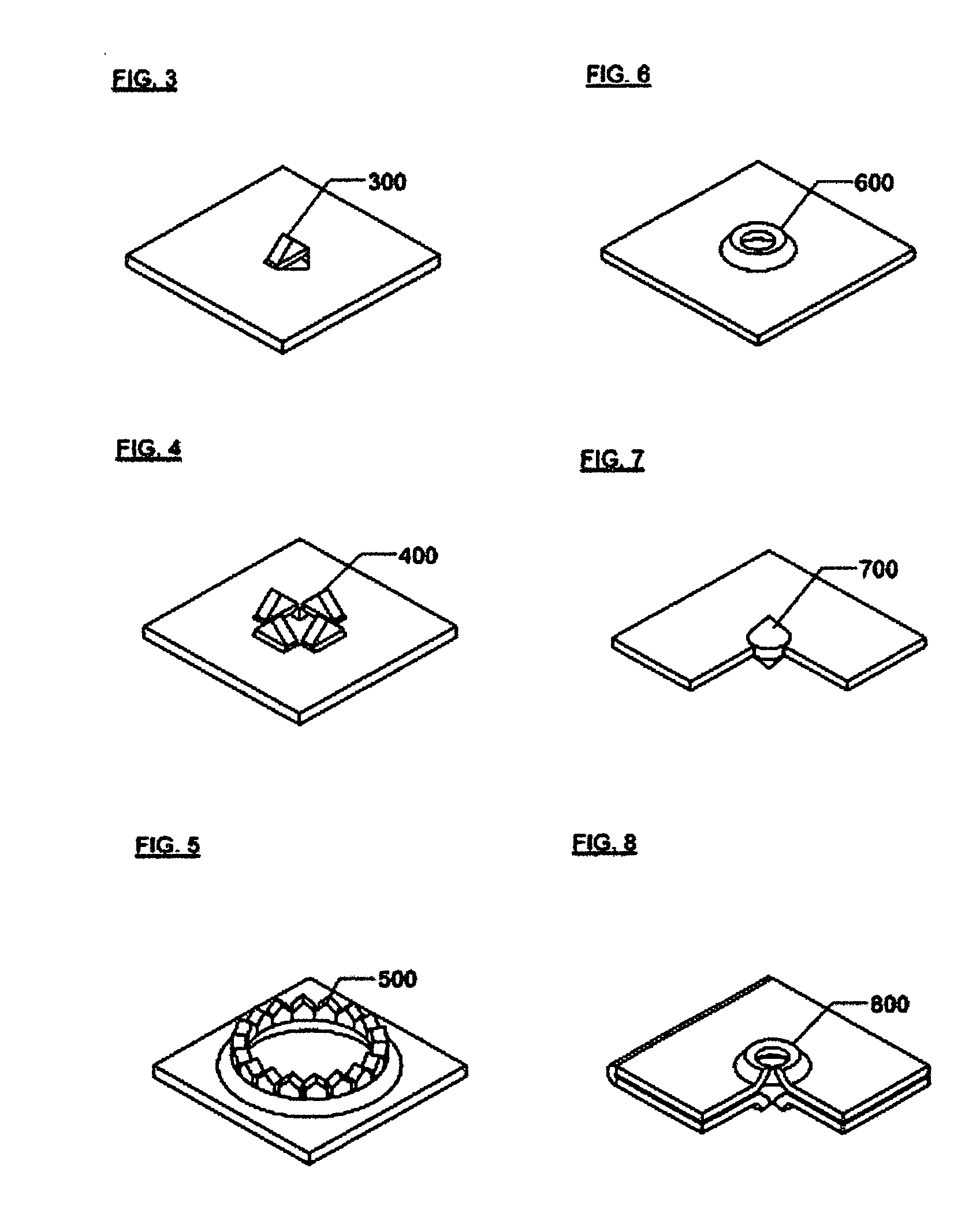Bonding Washer
a washer and washer body technology, applied in the direction of washers, non-insulated conductors, rod connections, etc., can solve the problems of increasing the overall system price, adding material and labor costs, and the cost of grounding lugs themselves
- Summary
- Abstract
- Description
- Claims
- Application Information
AI Technical Summary
Benefits of technology
Problems solved by technology
Method used
Image
Examples
Embodiment Construction
—FIGS. 1 THROUGH 5-PREFERRED EMBODIMENT
[0142]FIG. 1 illustrates features of the prior art. This star washer is formed from a flat metal piece. Star washer body 100 has two sets of teeth on its internal circumference. FIG. 2 illustrates the prior art in an assembly. The longer teeth 101 will retain the washer on the threads of screw 200, the shorter teeth 102 will make electrical connection to the upper metal piece 201 and lower metal piece 202 when the fastener is tightened. Teeth 102 are twisted out of the plane of the washer body 100. When screw 200 is tightened, upper metal piece 201 and lower metal piece 202 will press on the teeth 102. Since the washer is made out of a spring metal, teeth 102 will resist the tightening. As screw 200 is tightened, teeth 102 will scrape against upper metal piece 200 and lower metal piece 201. This scraping is sufficient to clear dirt or grease from a surface, but is too weak to break through an anodized surface. As screw 200 is further tightened,...
PUM
 Login to View More
Login to View More Abstract
Description
Claims
Application Information
 Login to View More
Login to View More - R&D
- Intellectual Property
- Life Sciences
- Materials
- Tech Scout
- Unparalleled Data Quality
- Higher Quality Content
- 60% Fewer Hallucinations
Browse by: Latest US Patents, China's latest patents, Technical Efficacy Thesaurus, Application Domain, Technology Topic, Popular Technical Reports.
© 2025 PatSnap. All rights reserved.Legal|Privacy policy|Modern Slavery Act Transparency Statement|Sitemap|About US| Contact US: help@patsnap.com



